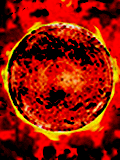Qualitative/Quantitative Lesson 3 "Matter: Pure Substances and Mixtures"
Science and Technology Standards:
PA Standard 3.4.12A
PA Standard 3.4.12D
PA Standard 3.7.12B
Purpose:
1. I will determine the volumes of liquids to the correct number of significant figures.
2. I will review my mathematics knowledge (Quant Only)
3. I will describe matter as a pure substance or a mixture.
4. I will describe how to separate a compound.
5. I will describe and separate various mixtures.
6. I will measure volumes of liquids.
Homework Due:
1. *Review - Basic Math used in Chemistry: Percentage (Due Lesson 3)
2. *Review - Basic Math used in Chemistry: Ratio and Proportion (Due Lesson 3)
3. Sections 3.1 - 3.5 Notes (Due Lesson 3)
4. Sections 2.4 - 2.5 Notes (Due Lesson 4)
5. Self-Check Exercises 2.2 & 2.3 (Due Lesson 4)
*Quantitative Class Only
Handouts/Supplies:
1. “Matter.ppt”
2. NaCl, Fe, Tap Water, Sand
3. Hot Plates, Filter Paper, & Magnets
4. Plastic Bags & Dixie Cups
5. “Measuring Liquid Volumes with a Graduated Cylinder” Handout
I. Introduction
Opening Assignment:
Warm-Up: Measure the volume of water in a graduated cylinder or beakers A, B, & C using the metric system.
Check over the homework:
1. Review - Basic Math used in Chemistry: Percentage (Quant Only)
2. Review - Basic Math used in Chemistry: Ratio and Proportion (Quant Only)
3. Sections 3.1 - 3.5 Notes
Review warm-up
State the purpose
II. The Lesson:
Activity #1: Review warm-up (A Review of Section 2.4)
Activity #2: Review problems in Basic Math Review: Percentage (Quant Only)
Activity #3: Review problems in Basic Math Review: Ratio and Proportion (Quant Only)
Activity #4: Discuss matter, pure substances, and mixtures (”Matter.ppt”)
Activity #5: Identify the following as an element, compound or a mixture: 1. Sodium chloride, NaCl
2. Sand
3. Iron, Fe
4. Tap Water Activity #6: Discuss the separation of mixtures (”Matter.ppt”)
Activity #7: Separate the following mixtures:
1. Salt from a salt water solution (The water does not to be collected)
2. Sand from a water/sand mixture (The water must be collected)
3. Iron from an iron/sand mixture Activity #8: Explain how a distiller works and collect some distilled water in the process
Activity #9: Prep the “Measuring Liquid Volumes with a Graduated Cylinder” Activity
Activity #10: Complete the “Measuring Liquid Volumes with a Graduated Cylinder” Activity
Activity #11: Demonstrate the separation of oxygen from the compound potassium chlorate
III. Closure:
Summary Assignment:
Summarize today's lesson
1. Explain how you would separate (a) salt from water, (b) sand from water, or (c) iron from sand.
Homework Assignment (Write down in planners):
1. Sections 2.4 - 2.5 Notes (Due Lesson 4)
2. Self-Check Exercises 2.2 & 2.3 (Due Lesson 4)
*Quantitative Class Only
Preview of Next Class:
1. Significant Figures and Zeros
2. Addition, Subtraction, Multiplication, and Division with Significant Figures
Page maintained by: Stephen A. Roe
Last update: Saturday, January 27, 2007 9:09 AM
|

